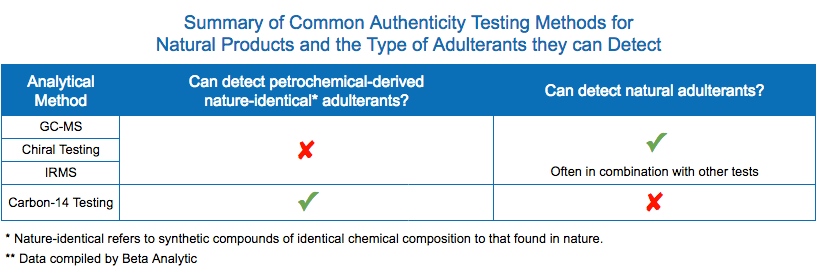How to Identify Fraudulent Natural Products
ISO 17025-accredited Beta Analytic presented the results of its garlic oil case study in an article published in the Journal of Agricultural and Food Chemistry. The lab tested five commercially available garlic oil — four were labeled as “natural” and one sample was clearly labeled as “artificial”. All five samples passed GC-MS testing. However, Carbon-14 analysis results show that only one of them is 100% naturally sourced.

Carbon-14 Analysis vs Other Methods
Carbon-14 testing enhances the quality control measures of essential oils manufacturers and distributors.
There are several analytical techniques used to detect adulteration in natural products like essential oils. However, these methods only detect “natural” adulterants often in combination with other tests. Carbon-14 analysis can detect synthetic, petroleum-derived adulterants. The method, however, cannot identify specific adulterants.

For more information, please read Beta Analytic’s article “Identifying Fraudulent Natural Products: A Perspective on the Application of Carbon-14 Analysis” published in the Journal of Agricultural and Food Chemistry’s Advances in Bioflavor Research special issue (March 2019).
Related Topic:
Beta Analytic Case Study – Natural vs Synthetic Peppermint Oil
Carbon-14 Testing Laboratory Beta Analytic
Based in Miami, Florida, Beta Analytic provides fast, high-quality natural versus synthetic essential oil testing by carbon-14 analysis.
The lab has extensively worked on essential oils, flavors and supplements, among others. For price and turnaround time inquiries, please contact the lab using this form or call (+1) 305-662-7760.
This entry was posted on Wednesday, April 24th, 2019 and is filed under Beta Analytic Case Studies, Beta Analytic Updates, Essential Oil Testing, Flavor & Fragrance, Flavors Carbon-14 Analysis, Natural Product Testing .